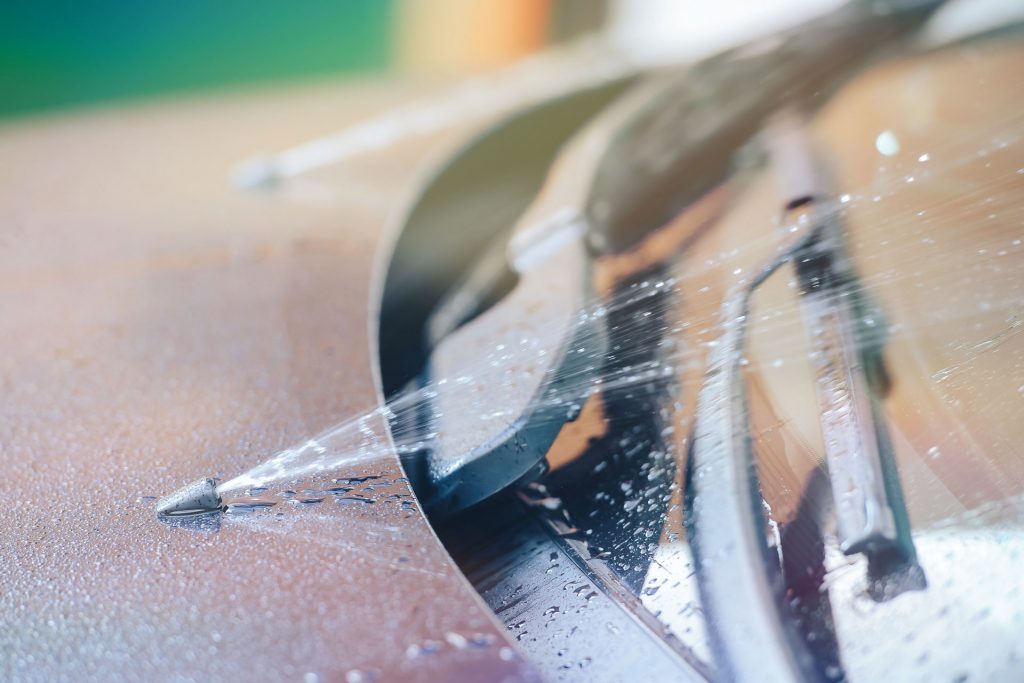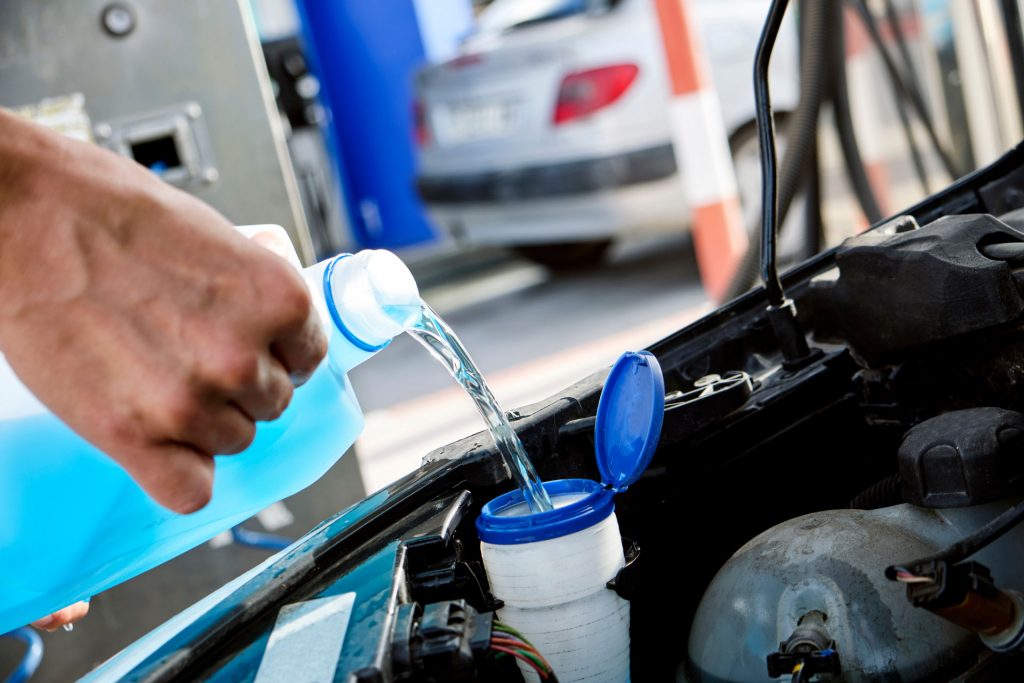Washer Fluids
If you drive on the highway or on unpaved roads, it is almost inevitable that the windshield of your vehicle will become dirty with dead insects or dust and need to be cleaned. Even on paved city streets, mud sprayed up from other vehicles, rain, snow, and much more can make it hard to see through the windshield. Sometimes, the windshield wipers might be enough for the task. Often, however, drivers need to spray washer fluids onto the windshield to help break up the dirt and clear it off. Knowing how windshield washer fluids work can help drivers understand how to use this very important tool.

Every vehicle comes with a special reservoir for washer fluid, normally close to the engine. Keeping that tank full is important to avoid situations where the windshield is dirty, but all of the fluid is gone. Mechanics and gas station attendants can refill the tank if necessary, but many vehicle owners prefer to take care of that themselves. Usually, it is a fairly simple task of finding the right spot, taking the cap off the reservoir, pouring the liquid into it, and closing it again, being careful not to overfill the tank.
Weather and Washer Fluid Choice
However, the task is a bit more complicated than that, beginning with choosing the right fluid to use. Although washer fluid looks like water, it contains chemicals that help to keep the fluid working properly. Different types of fluid have various benefits, and it is important to choose the right one, suitable for the local climate.
In areas that experience cold winters, for example, using washer fluid that can work at -40 C is essential, even if the weather rarely dips to that temperature. The bottle containing the washer fluid should list the lowest temperature at which it works, as well as the ingredients. It is a good idea to check these ingredients to try to determine the percentage of water in the mixture. Mixtures with high levels of water are not likely to be as effective as ones with larger proportions of other ingredients.

Filling the washer fluid reservoir with plain water is not a good idea. As Benjamin Yong notes on the Open Road Auto website, plain water can freeze in the tank in cold weather, while in fluctuating weather, it can cause mould to form and bacteria to grow, potentially damaging the system. Water in the washer reservoir has other potential hazards. A Consumer Reports article notes that a British study has found a connection between plain water being used as washer fluid and Legionnaire’s Disease, a type of pneumonia.
Choosing a Type of Washer Fluid
The Autoguide website gives some guidelines for choosing washer fluid. While plain water is an option in an emergency, the correct type of fluid acts as a detergent, breaking down dirt and even insects into manageable segments that the wipers can clean off the windshield. All season washer fluids are good for moderate climates but are unlikely to work for Canadian winters in much of the country. Many other washer fluids can be ineffectual due to their high water content. Customer ratings of various products can help, but drivers should also read the labels on the bottles to make sure that the washer fluid fits with their needs.
Every driver needs to use the washer fluid at some point, but some need it more than others. Off-road trips into the wilderness normally cause the windshield to become far dirtier than city driving, for example. A vehicle that is normally parked in a garage is also likely to require less washer fluid than one that is parked on the street under trees. In winter, drivers may be able to use snow on the windshield as temporary washer fluid, although that is only a short-term solution. Determining the kind of use the vehicle normally receives can help the owners decide on the best type of washer fluid to use.
Types of Washer Fluids
Besides the all-season variety, which is unlikely to be adequate for Canadian winters, washer fluid comes in a number of types. As the authors of the Drive website note, some washer fluids come ready to pour into the reservoir. Others are concentrated liquids that should be mixed with water before using. Still others come as tablets that need to be mixed with water to create the fluid for washing the windows. All three have their own advantages and disadvantages, and the choice that people make could depend on factors such as cost and how much effort they want to make.
While the premixed variety of washer fluid is the easiest option as it involves merely pouring a solution into the tank, some people might prefer either of the other two options. They might find that the concentrated liquids or tablets are more effective at clearing dirt off the windshield, or they could just prefer to vary the strength of their washer fluid, depending on the weather and vehicle use.
For example, someone who drives primarily on gravel roads might need washer fluid to be concentrated to a far greater degree than someone who drives mainly on paved streets. With the concentrated liquid or tablets, drivers can choose the intensity of the cleaning ingredients as needed. Having the three main options allows drivers to choose the one that suits their needs and the amount of trouble they are willing to take over washer fluid.
Checking the Washer Fluid
Checking the level of washer fluid regularly is essential, whether drivers do this themselves or ask someone else. A dirty window is potentially a safety concern, since drivers need to be able to see as well as possible out of the windshield in order to see obstructions along the way. For vehicles with back windshield wipers, washer fluid can also be helpful for keeping the glass clean. Although no insects are likely to smash against that window, mud and rain can splatter against it and make visibility difficult.
Washer fluid is something that many people are likely to forget until they need it to clean a dirty windshield. Choosing the right type of fluid and ensuring that the levels are always where they should be is important for any driver.
